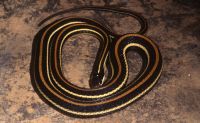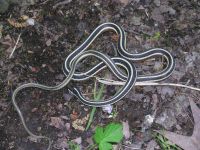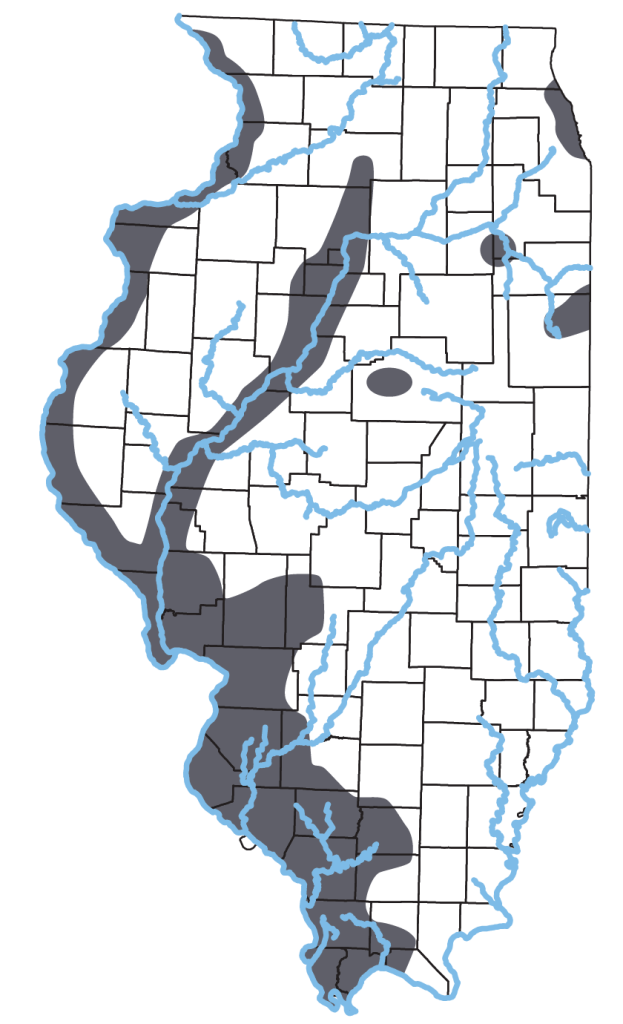Thamnophis proximus (Say, 1823)


Key Characteristics: Side stripe on scale rows 3-4; orange midback stripe; pair of light spots on top of the head; back scales keeled; anal plate not divided.
Similar Species: Eastern Ribbonsnake, Common Gartersnake, Plains Gartersnake. See the Key to Snakes of Illinois for help with identification.
Subspecies: Four subspecies are currently recognized, but only one, Orange-striped Ribbonsnake, T. p. proximus is known to inhabit Illinois.
Description: Medium-sized (up to 90 cm TL), slender black snake with an orange midback stripe and yellow or greenish stripes on each side. Belly greenish white. Tail about one-third of body length. Paired spots on top of head relatively large and partially fused. Usually 8 supralabial scales.
Habitat: Border vegetation around permanent bodies of water (swamps, marshes, ponds, rivers, ditches) and along bases of nearby rock outcrops where some individuals hibernate. Climbs onto piles of plants and low bushes.
Natural History: A quick, wary snake that climbs and swims readily. Bites when handled. Mates in April or May and gives birth to 10-15 young from July into October that are 15-20 cm TL. Diet mainly of fish and amphibians, especially frogs, and occasionally includes small reptiles. Among its predators are large shore birds, medium-sized mammals, and other snakes. Hibernates in rock crevices and burrows.
Status: Locally common along the Mississippi River valley and in southwestern counties, where cultivation and drainage of wetlands are major threats.
Etymology: Thamnophis – thamnos (Greek) meaning shrub, bush; ophio (Greek) meaning serpent, reptile; proximus – (Latin) meaning nearest.
Original Description: Say, T. 1823. in Edwin James, Account of an expedition from Pittsburgh to the Rocky Mountains…under the command of Major Stephen H. Long. Carey and Lea, Philadelphia. 2. 442 pp.
Type Specimen: Holotype. Lost.
Type Locality: “Stone quarry on west side of Missouri River 3 miles above the mouth of the Boyers River” [Potawattamie County, Iowa].
Original Name: Coluber proximus Say, 1823
Nomenclatural History: Kennicott (1855) used the combination Eutania proxima. Davis & Rice (1883) used Eutaenia proxima. S. Garman (1883) considered proximus a subspecies of Thamnophis sauritus, using the combination Tropidinotus saurita var. proximus which is how H. Garman (1892) and Smith (1961) treated it, although the former used Eutainia saurita Var. proximus and the latter Thamnophis sauritus proximus.


